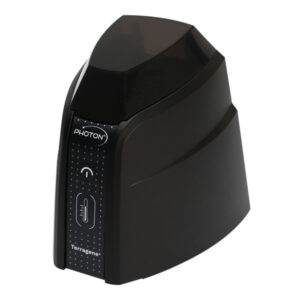In the sterile environment of a hospital, maintaining cleanliness is paramount. Disinfectants play a crucial role in preventing the spread of infections and ensuring the safety of patients and staff. Here, we explore the top 8 types of disinfectants used in hospitals and the factors to consider when choosing the right one.
Hydrogen Peroxide
Hydrogen peroxide is a powerful oxidizing agent that destroys a wide range of microorganisms. It is non-toxic and decomposes into water and oxygen, leaving no residue. Its versatility makes it suitable for various surfaces and medical equipment. However, its effectiveness can be reduced by organic matter, and it can cause skin irritation at high concentrations.
Con – It can cause skin irritation at high concentrations.
Chlorine & Chlorine Compounds
Chlorine-based disinfectants are among the most widely used in hospitals. They are effective against a broad spectrum of pathogens, including bacteria, viruses, and fungi. Chlorine compounds, such as sodium hypochlorite, are potent, fast-acting, and cost-effective, making them ideal for high-traffic areas and surfaces. As per the study, sodium hypochlorite is NOT effective in the disinfection of bacterial spores and prions.

Con – They can be corrosive and irritating to the skin and respiratory tract.
Peracetic Acid
Peracetic acid is a potent disinfectant known for its rapid action and broad-spectrum efficacy. It is particularly effective against resistant organisms like spores and mycobacteria. Peracetic acid is often used in sterilizing medical and surgical instruments. Despite its effectiveness, it is corrosive and can be harmful if inhaled or ingested.
Con – It is corrosive and can be harmful if inhaled or ingested.
4. Hydrogen Peroxide & Peracetic Acid
This combination leverages the strengths of both disinfectants, providing a highly effective solution for sterilisation. The synergistic action enhances microbial kill rates and broadens the spectrum of activity. This blend is commonly used in automated disinfection systems and for sterilising complex medical devices.
Con – It can be corrosive and irritating to the eyes, mucous membranes of the respiratory tract, and skin.
5. Ortho-Phthalaldehyde (OPA)
OPA is a high-level disinfectant used primarily for reprocessing medical instruments. It is cleared by the FDA as a high-level replacement disinfectant for endoscopes. It is effective against a wide range of microorganisms, including mycobacteria. OPA is less irritating to the skin and eyes compared to other aldehydes, but it can cause respiratory irritation and has a strong odour. Its high cost is another consideration.
Con – It can cause respiratory irritation and has a strong odour.
6. Phenolics
Phenolic disinfectants are synthetic chemicals effective for virucides, fungicides, bactericides and tuberculocides. They are commonly used for surface disinfection in hospitals. Phenolics are stable and work well in the presence of organic matter, but they can be toxic and irritating to skin and mucous membranes, necessitating careful handling.
Con – They can be toxic and irritating to skin and mucous membranes.
7. Iodophors
Iodophors are iodine-based disinfectants that release free iodine when in solution. They are effective against a wide range of pathogens and are less irritating than elemental iodine. It has viricidal, fungicidal, bactericidal, tuberculocidal and sporicidal properties.Iodophors are used for skin antisepsis and disinfection of equipment and surfaces. However, they can cause staining and are less effective in the presence of organic matter.
Con – They can cause staining and are less effective in the presence of organic matter.
8. Quaternary Ammonium Compounds
Quaternary ammonium compounds, or quats, are widely used in hospital settings for disinfecting surfaces and non-critical medical equipment. They are effective against bacteria, enveloped viruses, and some fungi. Quats are relatively safe and non-toxic, but their efficacy can be diminished by organic matter and they are not effective against non-enveloped viruses and spores.
Con – They are not effective against non-enveloped viruses and spores.
Factors to Consider When Choosing the Right Disinfectant
Efficacy: The disinfectant must be effective against the specific pathogens present in the hospital environment.
Safety: Consider the safety of the disinfectant for patients, staff, and the environment.
Material Compatibility: Ensure the disinfectant is compatible with the surfaces and equipment it will be used on.
Cost: Evaluate the cost-effectiveness of the disinfectant, including dilution requirements and frequency of use.
Ease of Use: Choose disinfectants that are easy to apply and require minimal staff training.
Regulatory Compliance: Ensure the disinfectant meets all relevant regulatory standards and guidelines.
Ultroz Disinfectant: A Game-Changer in Sterilisation
Miracle Industries introduces Ultroz Disinfectant, a revolutionary product in the world of sterilisation. Unlike competitors, Ultroz incorporates Hydrogen Peroxide with Silver Nitrate, enhancing its germ-fighting capabilities. With a lower dilution requirement of just 4% compared to others at 20%, it is both economical and effective, targeting a wide spectrum of bacteria.
Hydrogen Peroxide with Silver Nitrate is a widespread multipurpose disinfectant with an extensive variety of applications. Ultroz Disinfectant stands out due to its unique formulation of these two components. This innovative combination ensures that Ultroz Disinfectant when diluted appropriately does not cause any issues commonly associated with other disinfectants, such as irritation to the skin.
Ultroz Disinfectant is designed to be used with a fogger, ensuring it penetrates every corner, making it ideal for hospitals, the pharmaceutical industry, the food industry, and more. Manufactured in an FDA-approved facility and rigorously tested to ASTM E2315 standards, it guarantees safety and reliability.
By leveraging the powerful and unique formulation of Hydrogen Peroxide with Silver Nitrate, Ultroz Disinfectant offers unparalleled efficacy and safety, setting a new standard in the disinfectant industry.
Affordable and cost-efficient, Ultroz Disinfectant offers effectiveness and value, ensuring it’s a reliable choice for all your sterilisation needs. Trust Ultroz for a cleaner, safer, and more efficient sterilisation process.
Frequently Asked Questions
1: Are all hospital disinfectants safe for use around patients?
While hospital disinfectants are designed for safety, it’s important to follow manufacturer guidelines for use, as some can cause skin irritation or respiratory issues if not used properly. Ultroz Disinfectant stands out due to its unique formulation, and when diluted it does not have issues commonly associated with other disinfectants, such as irritation to the skin or respiratory issues.
2: How often should hospital surfaces be disinfected?
The frequency of disinfection depends on the area and the level of contamination risk. High-touch areas and critical environments require more frequent disinfection.




